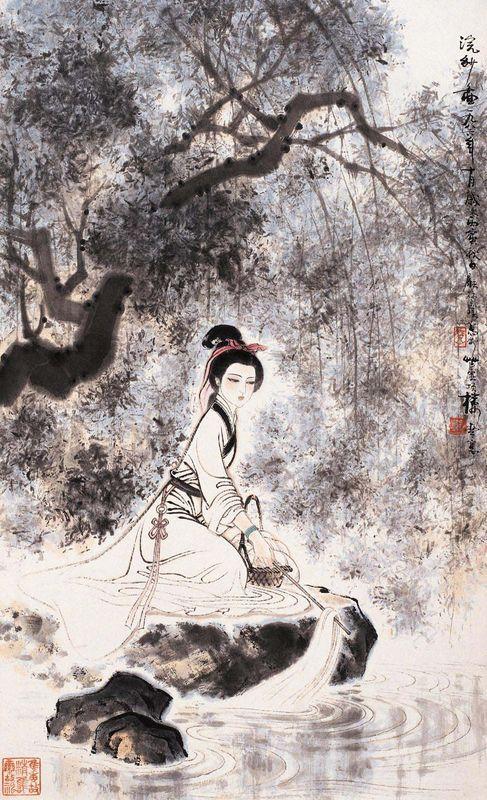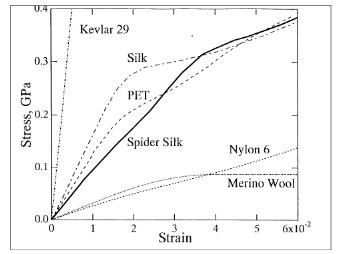Team:Groningen/Project
From 2013.igem.org
| Home | Team | Official Team Profile | Project | Parts Submitted to the Registry | Modeling | Notebook | Safety | Attributions |
|---|
Contents |
Night or Day, Silk is the way xD
small intro here
The origin of silk
Ancient Chinese legend has it that a princess named Xi Ling Shi, who was having a relaxing afternoon under a Mulberry tree, first discovered silk 4500 years ago when a cocoon suddenly fell in her tee. After some time, Xi Ling Shi extracted a silk thread from her still steaming cup of thee, and unraveled the secret of silk along with its cocoon.
The knowledge that silk could be extracted from insect cocoons was closely guarded, and harsh conditions were set (the penalty of death) to anyone who was caught smuggling the eggs or cocoons. By such means, China realized a two thousand year monopoly of the silk industry, which was, according to yet another legend, put to an end when a Chinese princess smuggled moth eggs and mulberry seeds as a gift for her future husband. Subsequent to the princesses betrayal, the secret of silk was still kept secret from the west for another good thousand years or so, as it was only in the 12th century ACE that sericulture (the production of silk) began to develop.
Silk has thus inspired many legends and myths. Whether the stories are true or not, it is a fact that the discovery of silk has had world-wide impacts on culture, economy, development, and trade due to its much desired properties.
Princess Xi Ling Shi. [3]
The properties of silk
The unique properties of silk are a result of its highly constant and repetitive amino-acid structure. The sequence of amino-acids determines what secondary structures will arise, and thus the final preferred protein conformation. The secondary structures may be beta sheets, beta-spirals, and beta-helices, of which the sheets realize the silk's amazing tensile strength, and the spirals and helices its elongation.
In the figure below a stress-strain diagram can be found (Frank K. Ko, et at. 2001) where Clavipus spider silk is compared to, Kevlar 29, normal silkworm silk, PET (polyethylene terephthalate), Nylon 6, and Merino wool. The stress-strain diagram relates the degree of deformation to the amount of energy absorbed.
When used as clothing, silk has many beneficial properties. Its smooth, compact surface feels and looks nice, and it enables easy removal of dirt. It is a bad conductor of heat, making it cool in the summer and warm in the winter. Furthermore, it has a water absorption efficiency similar to that of wool, and is resistant to insects and mildew.
A final general property of silk it that it can be integrated with the human body - it will not induce an immune response - potentially making it an ideal choice for many biomedical applications. Its compatibility extends to the gastrointestinal tract, that is, it is even safe to eat!
The production of silk
The farming of silk is an arduous, time consuming, and costly process. Although a single cocoon may produce up to one mile of filament, 4 to 8 filaments are needed to produce a single thread, and approximately 5500 cocoons are needed for one kilogram of silk. Eight fully grown mulberry trees would have been needed for this single kilogram, and 48 hours of man-labor required to hand-reel it. Finally, the caterpillars required a full month to mature and three to five days to spin their cocoons, after which they were brutally boiled alive. Harvesting the more desired and rare silk from spiders requires an even more labor-extensive process. Each thread actually has to be pulled individually by hand from the spiders gland - needless to say, not a viable business plan!
The silk industry itself has undergone very little development over the past few millennia. Indeed, the manner in which it is obtained follows the very same process as that of princes Xi Ling Shi's initial discovery, albeit at a much grander scale with more specialized equipment. Scientists have therefore begun to design their own silk producing organisms [2]. Moreover, the 2012 iGEM team from Utah successfully designed the first spider-silk producing Biobricks for Escherichia coli (for more information, please visit their wiki). Such advancements are needed to provide the industries and manufacturers with sufficient silk proteins for their applications.
Applications for silk
Silk's journey as a product began as luxurious clothing reserved exclusively for the emperor subsequent to its initial discovery. As the sericulture developed, however, it was soon adopted by all classes of society. New applications were discovered, and it was spun into many different products; fishing lines, musical instruments, and bowstrings to name a few. It's utility and value were also recognized by other kingdoms, and a world-wide, ever increasing demand for the material began. Indeed, the western demand for silk was so great, that the main set of trade routes between Europe and Asia became known as the Silk Road.
.... Nowadays, the variety of silk applications is even more extensive; bullet-proof clothing, all sorts of ropes and cables, artificial tendons and ligaments, bandages, sewing thread, seat belts, parachutes, biodegradable bottles, and much more.....
References
[1] Frank K. Ko, et al, (2001). "Engineering properties of spider silk". MRS Proceedings, vol. 702
[2] Charlotte Vendrely & Thomas Scheibel, (2007). Biotechnological production of spider-silk proteins enables new applications. Macromol. Biosci, vol 7, pp 401-409.
[3] [http://www.chinancient.com/chinese-ancient-four-beauties-xi-shi/xi-shi-02-2/ Current online source.] Waiting for author for more details.
 "
"

